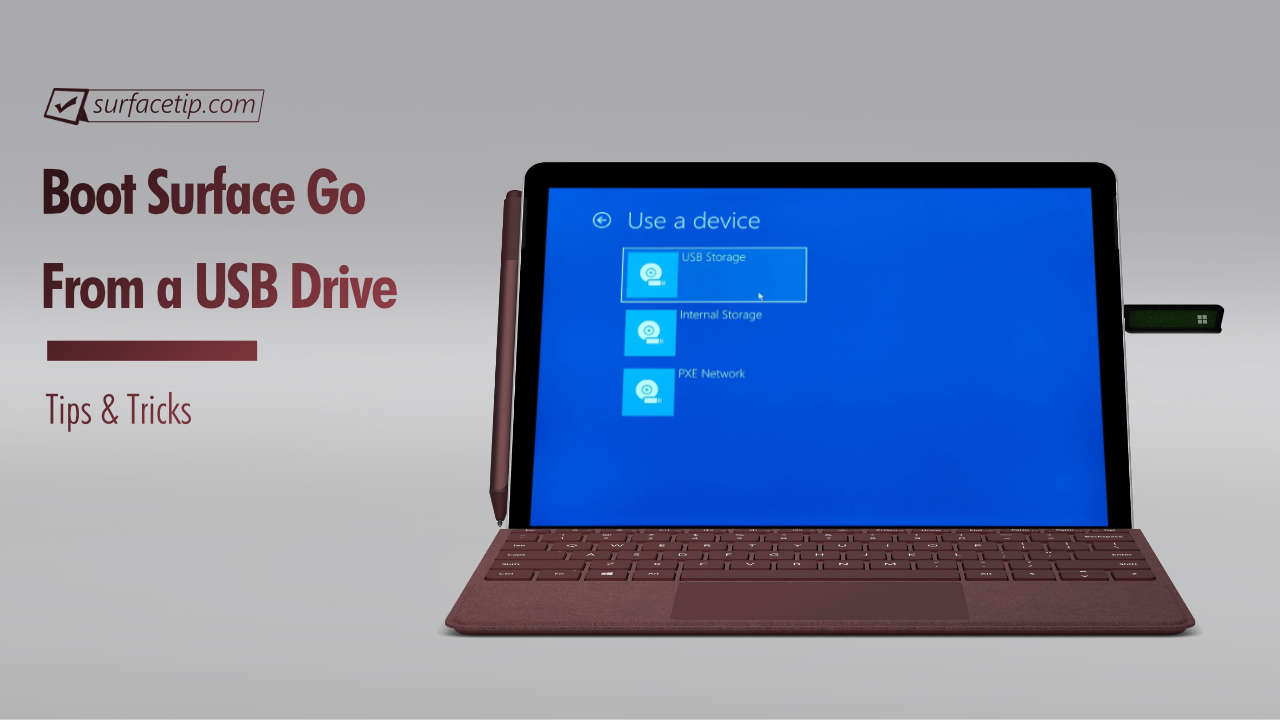
If you’re facing issues with booting Windows on your Surface Go, starting it up from a USB Drive can be frustrating without following the correct procedure. However, you need not worry; we have provided you with the information to boot your Surface Go from a USB Drive successfully.
To boot Surface Go from a USB drive, insert a bootable USB drive into the Surface Go’s USB port (required USB-C to USB-A dongle if you have a USB-A drive). Press and hold the Volume Down button. While holding, press & release the power button. When the Surface logo appears, release the Volume Down button.
Before proceeding, check out our tutorial for other Surface models with specific instructions, which you can find here.
- How to Boot Surface Pro 4-9 and X from a USB
- How to Boot Surface Book 1-3 from a USB
- How to Boot Surface Laptop 1-5 from a USB
If you have a Surface Go (1st Gen), Surface Go 2, or a Surface Go 3 PC, read on for a more in-depth guide on how to boot your Surface Go from a USB Drive.
Table of contents
Why Boot Surface Go From A USB Drive?
It is necessary to boot your Surface Go from a USB drive for various reasons, including:
- Resetting your Surface Go with a USB Recovery Drive.
- Fresh Windows Installation.
- Running Windows To Go.
- Installing or running Linux-based OS (Ubuntu, Fedora, Redhat, etc.).
- Loading bootable recovery or disk partition tools.
Surface Go Boot From A USB: Preparation
Before proceeding to the next step, here are some preparations you need to make before booting your Surface Go from a USB drive.
- Bootable USB Drive
You must have a proper bootable USB Drive. If you want to reset your Surface Go with a recovery drive, you must download the recovery image for your Surface and create a recovery drive before you can boot it up on your Surface Go. - Disable Secure Boot
Secure Boot blocked all third-party boot loaders from booting off your Surface devices. Disable Secure Boot lets you load third-party OS other than Windows 10, including older versions of Windows and Linux on your Surface Go. Here’s how to turn off the secure Boot on Microsoft Surface Go. - Backup Your Data
Save yourself later by backing your essential data to a MicroSD card or external hard drive. - Having a Wired Mouse & Keyboard
There is a chance that your Surface won’t support touch or pen input when you install clean Windows or load Linux OS on your Surface. Having a wired mouse, keyboard, and network dongle can help you in this situation. - Connected to the Charger
To prevent any unexpected shutdown during installation, make sure you have connected your Surface Go to an external power source.
Surface Go Boot From A USB: When Surface Go is Off
- Shut down your Surface Go.
- Insert your bootable USB recovery drive into the Surface Go’s USB port. You will need a USB-C to USB-A adapter with only a full-size USB drive.
- Press and hold the Volume Down button on your Surface Go, then press and release the Power button.
- When you see the Surface logo screen appear, release the Volume Down button.

Surface Go Boot From A USB: When Surface Go is On
There is an easier way to boot your Surface Go from a USB drive when you can sign in to Windows 10 or 11. Here is how to do that:
- Insert your bootable USB or Recovery drive into the Surface Go’s USB port.
- Open Windows Settings
First, you need to access Windows Settings by going to Start and opening the Settings app with the gear icon (or by using Win + I shortcut key). - Go to Windows Updates > Advanced options.
On the left pane of the settings, select “Windows Updates.” Then select “Advanced options” from the More Options section.

- Select the “Recovery” option
Under the “Additional options,” select “Recovery.”

- Restart your Surface Go in “Advanced Startup” mode.
Under recovery options, click the “Restart now” button to restart your Surface Go in advanced startup mode, allowing you to change startup settings.

- Select “Use a device.”
After your Surface Go is restarted, you will see a blue screen with the following options. Select “Use a device.”

- Select “USB Storage”
It will list all possible ways to boot, including all connected storage devices. Select “USB Storage”.

Your Surface Go will reboot with boot files from the inserted USB drive.
- Insert your bootable USB or Recovery drive into the Surface Go’s USB port.
- Open Windows Settings
First, you need to access Windows Settings by going to Start and clicking the Gear icon (or by using Win + I shortcut key). - Go to Update & Security
In Windows Settings, select “Update & Security“.

- Go to Recovery
On the left side of the settings, select Recovery.

- Restart your Surface in Advanced Startup
Under the “Advanced startup” section, click Restart Now to restart your Surface in an advanced startup mode.

- Select Use a device.
After your Surface Go is restarted, you will see a blue screen with the following options. Select Use a device.

- Select USB Storage
It will list all possible ways and connected storage devices. Select USB Storage.

Now, your Surface Go will reboot with your connected USB drive.
Surface Go Boot From A USB: With No Password
There are so many times that users might want to reset their Surface Go when they forget the account password that prevents them from logging in. Here is how to do that on the Surface Go with or without a keyboard attached.
- Open On-Screen Keyboard (skip this if you have a keyboard attached)
On the Windows 11 login screen, Go to the Accessibility icon and stay right next to the power icon. Then select the “On-Screen Keyboard”.

- Press and hold the Shift Key
On the Surface Type Cover, press and hold the Shift key (on the On-Screen Keyboard, click the shift key, and it will hold by itself). - Go to Power > Restart
On the right-bottom of the screen, click the power icon and select Restart. It will reboot your Surface Go in Advanced startup mode.

- Select Use a device.
After your Surface Go is restarted, you will see a blue screen with the following options. Select Use a device.

- Select USB Storage
It will list all possible ways and connected storage devices. Select USB Storage.

- Open On-Screen Keyboard (skip this if you have a keyboard attached)
On the Windows login screen, Go to the Ease of Access icon and stay right next to the power icon. Select On-Screen Keyboard.

- Press and hold the Shift Key
On the Surface Type Cover, press and hold the Shift key (on the On-Screen Keyboard, click the shift key, and it will hold by itself). - Go to Power > Restart
On the right-bottom of the screen, click the power icon and select Restart. It will reboot your Surface Go in Advanced startup mode.

- Select Use a device.
After your Surface Go is restarted, you will see a blue screen with the following options. Select Use a device.

- Select USB Storage
It will list all possible ways and connected storage devices. Select USB Storage.

More on Surface Go Tips & Tricks
Here are some related articles for Microsoft Surface Go tips & tricks you might want to read:
- How to Manage Asset Tag on Microsoft Surface Devices
- How to Check Your Surface Warranty Status
- How to Enable Dolby Atmos Spatial Sound on Microsoft Surface Go 1-4
- The 3 Easy Ways to Adjust Surface Go Screen Brightness
- Here’s how to disable secure boot on Microsoft Surface Go
- Surface Go USB-C Charging: We tested 3 USB-C PD chargers for comparison
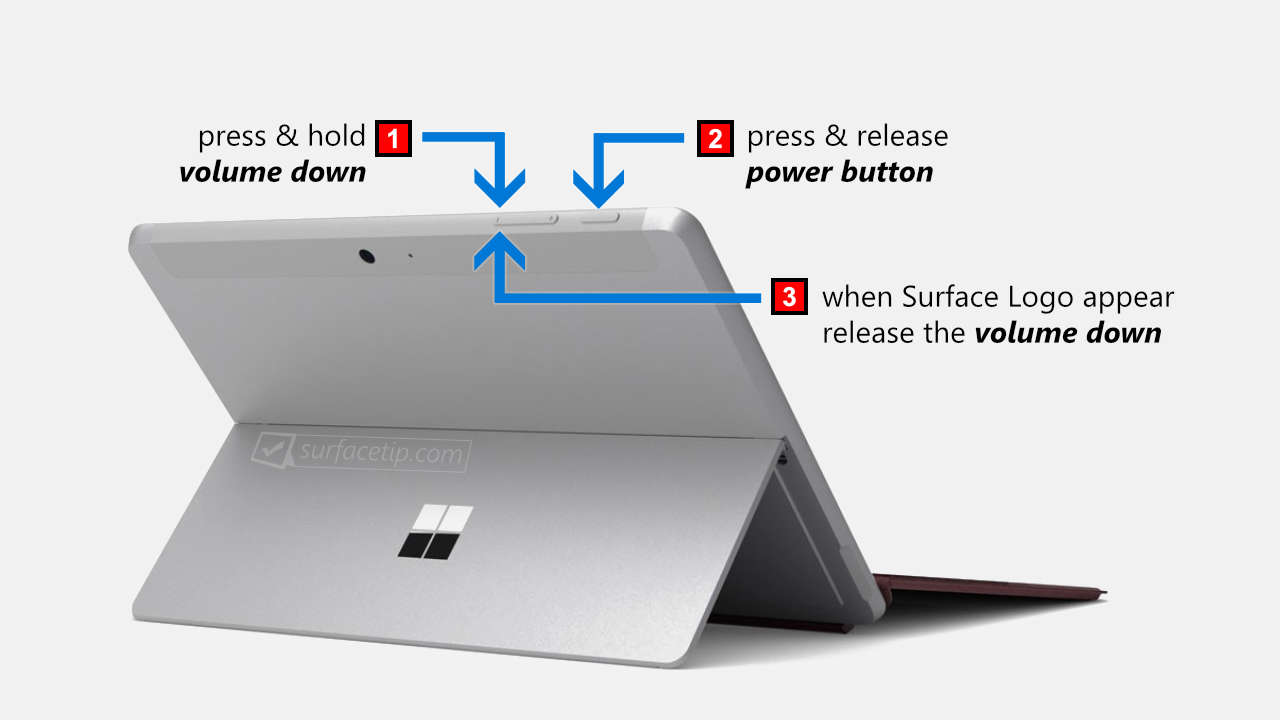
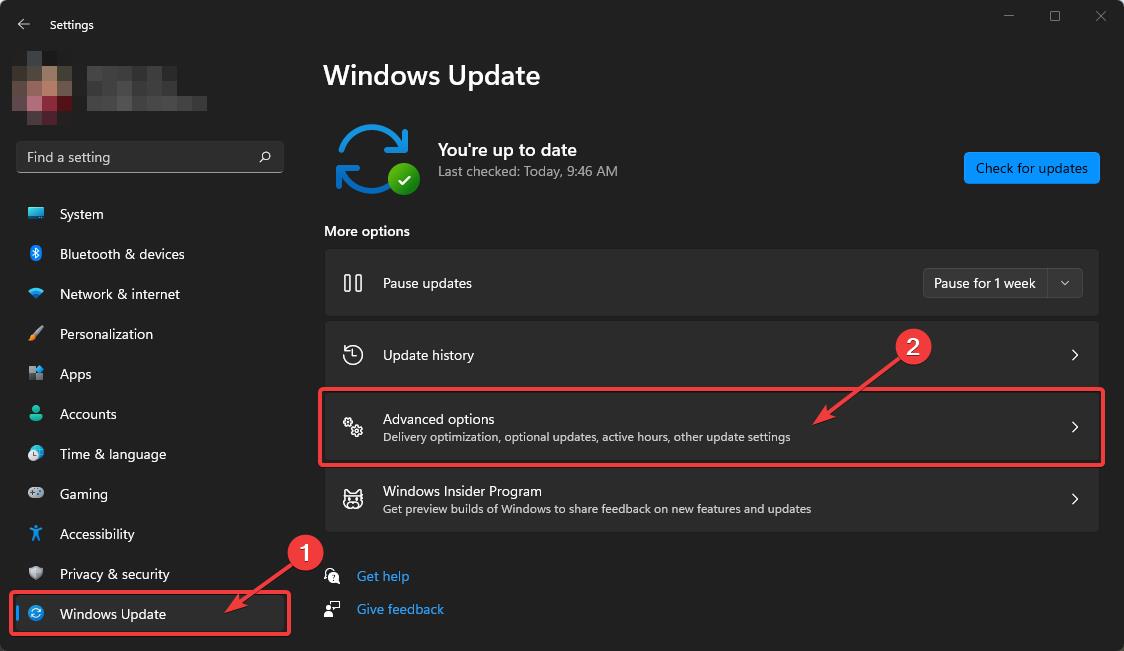
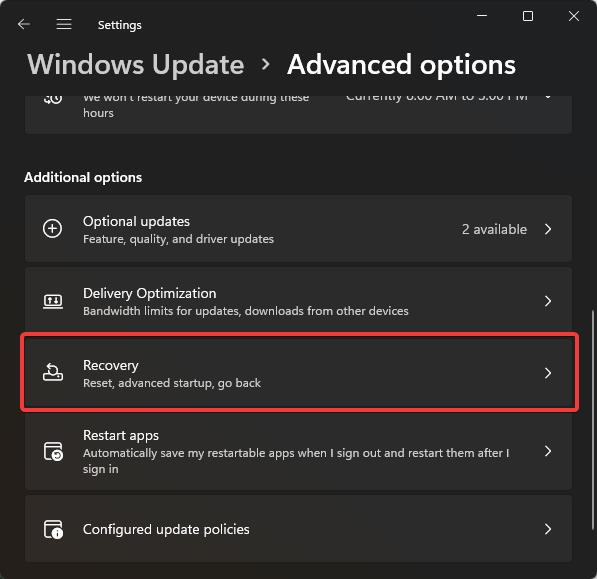
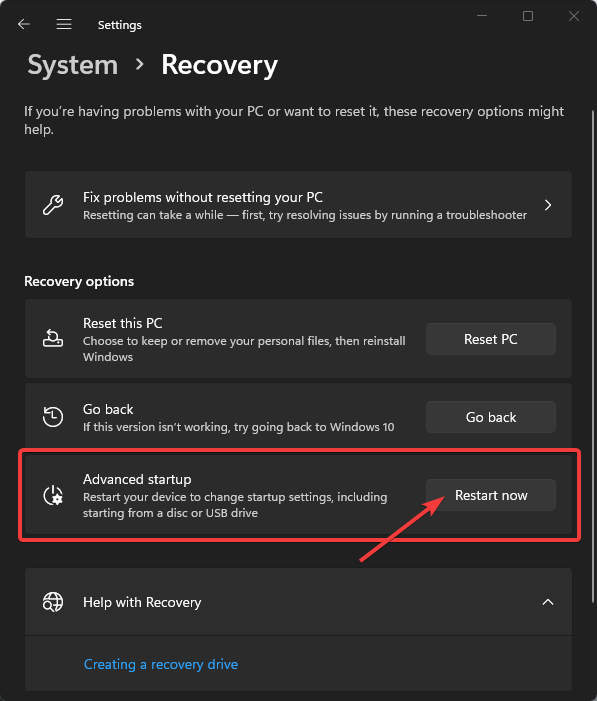
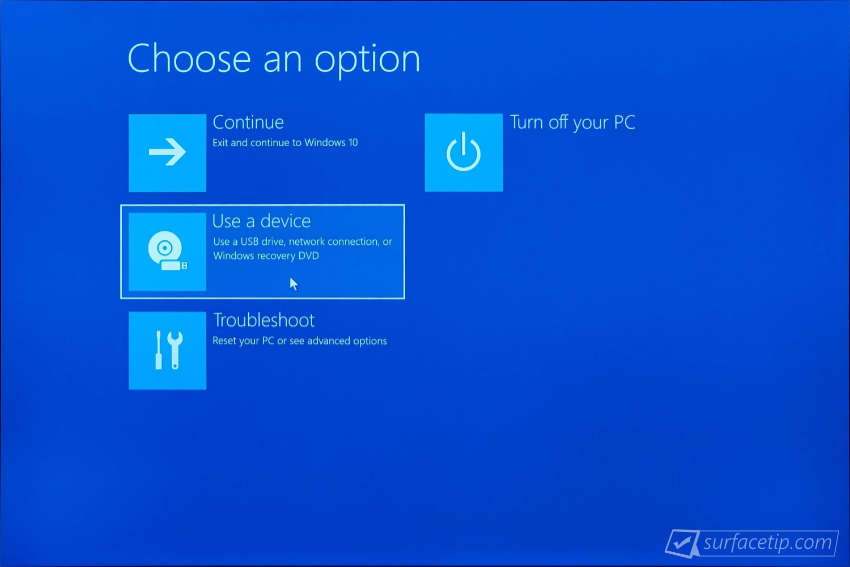
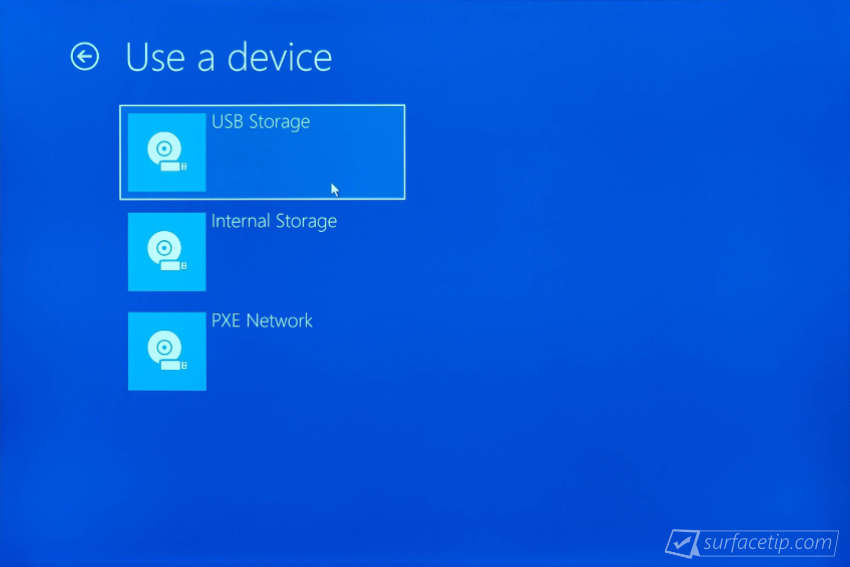
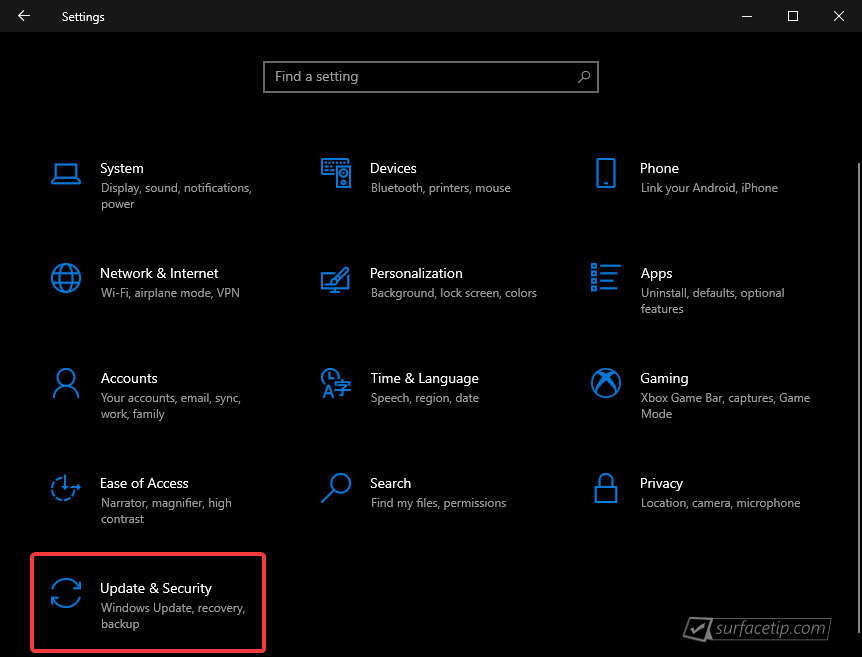

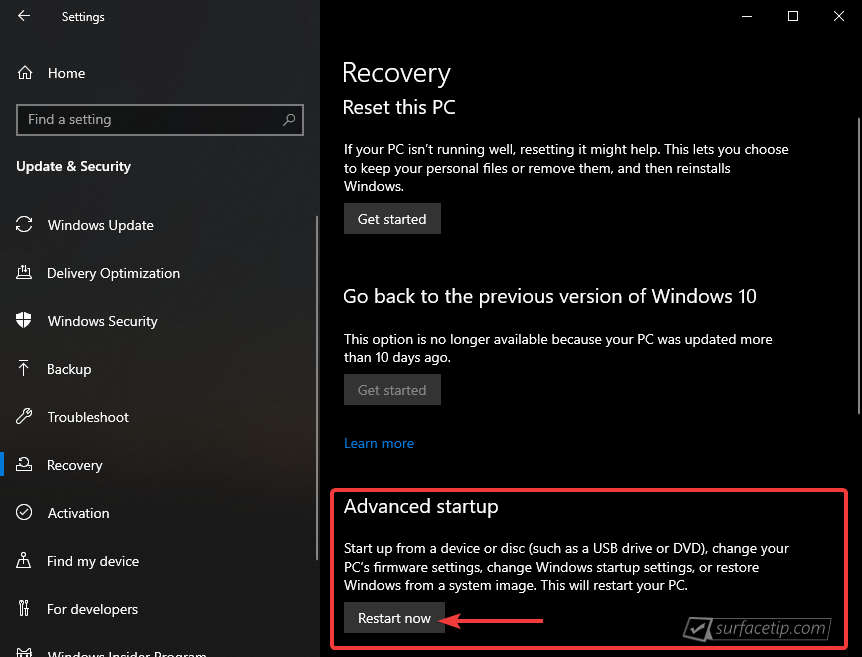
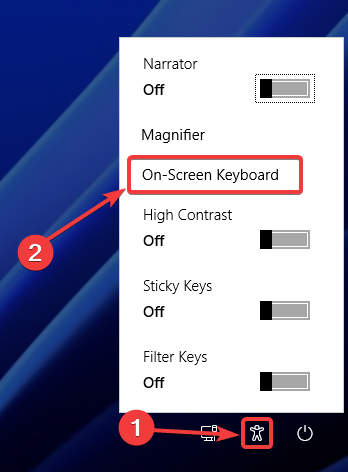
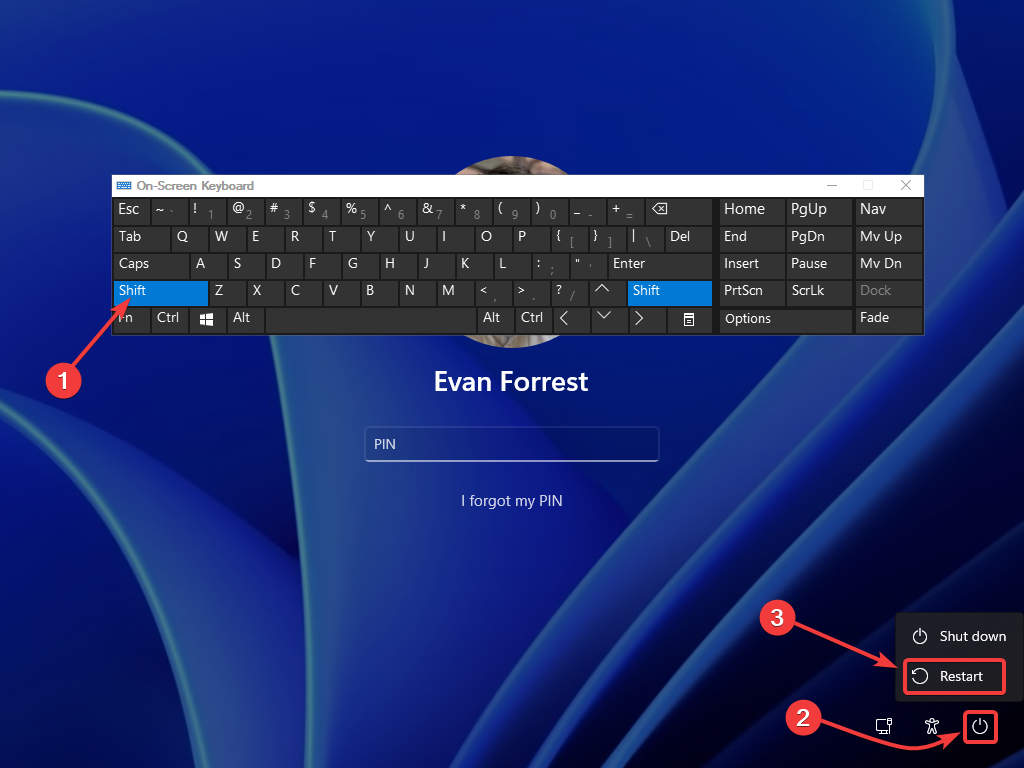
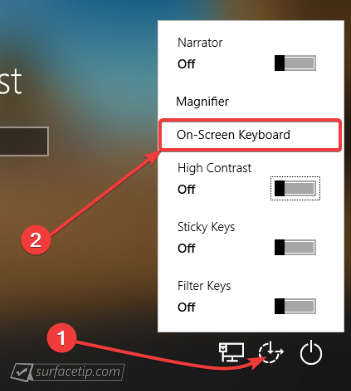
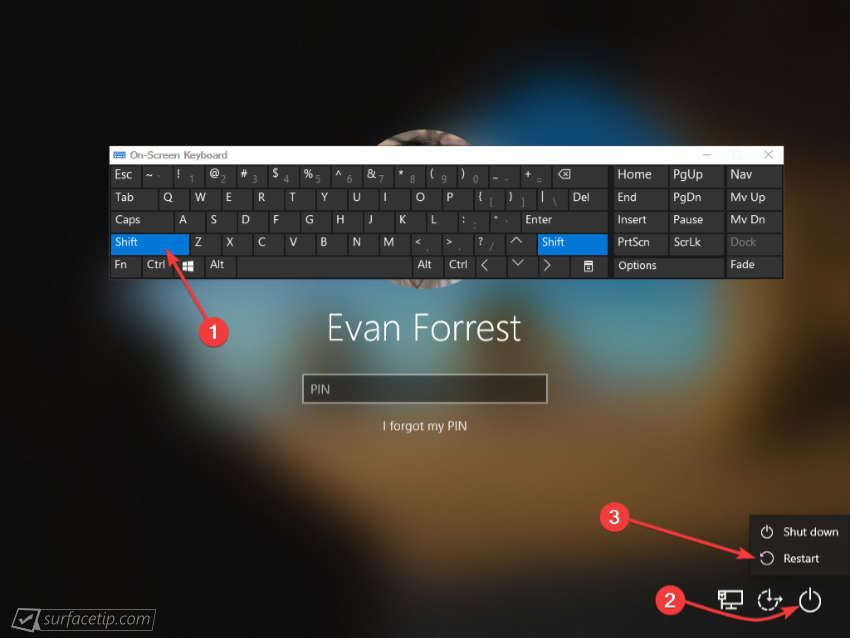

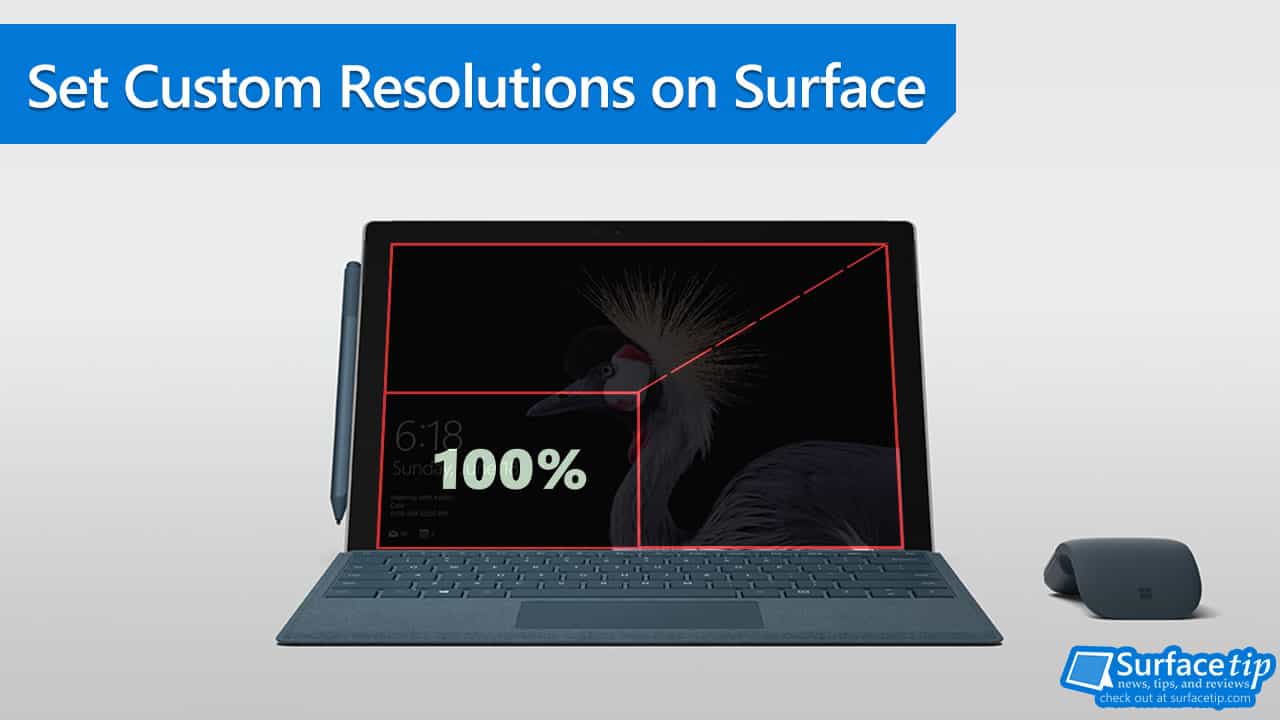
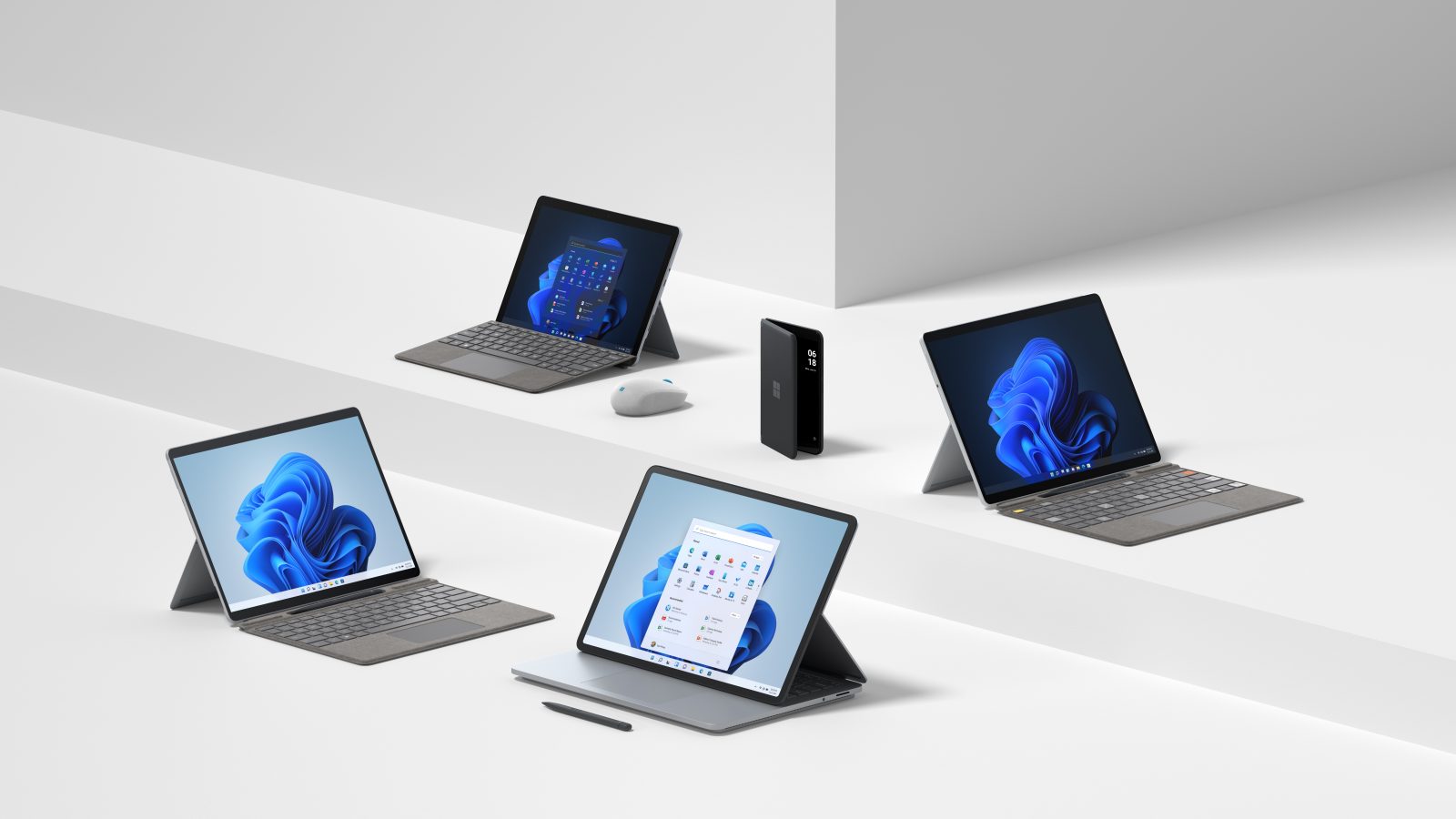

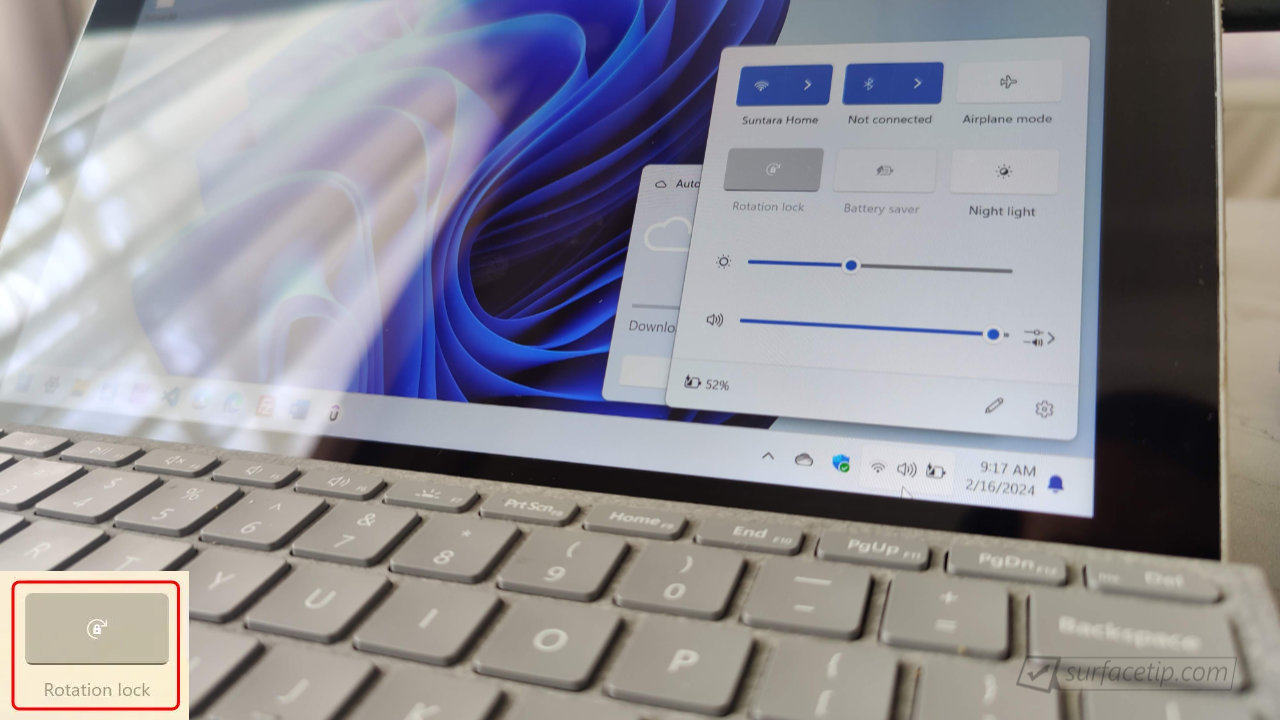
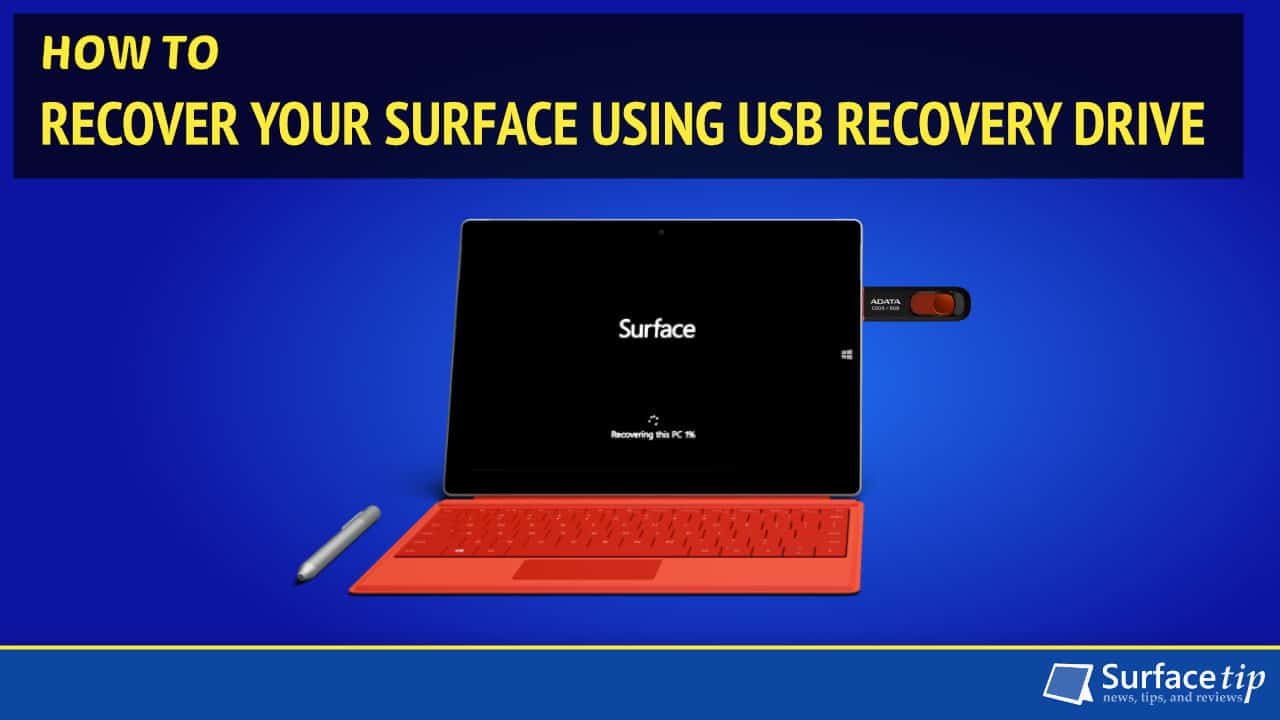
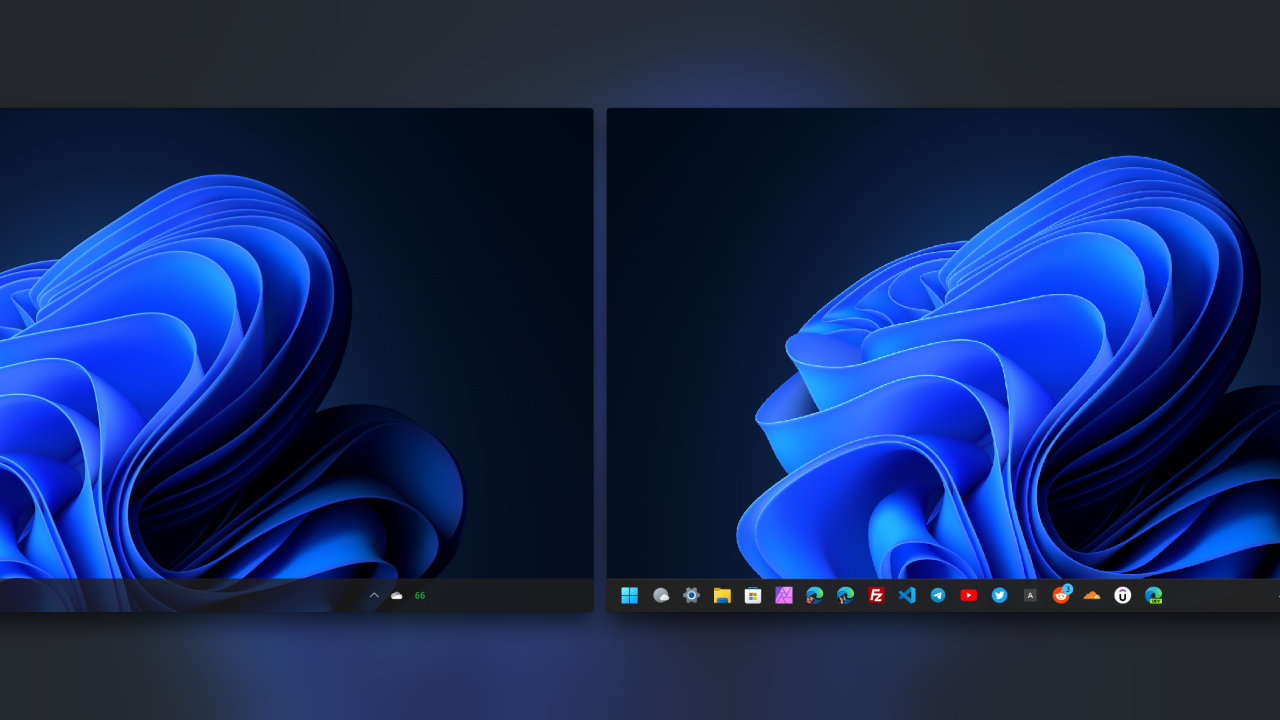
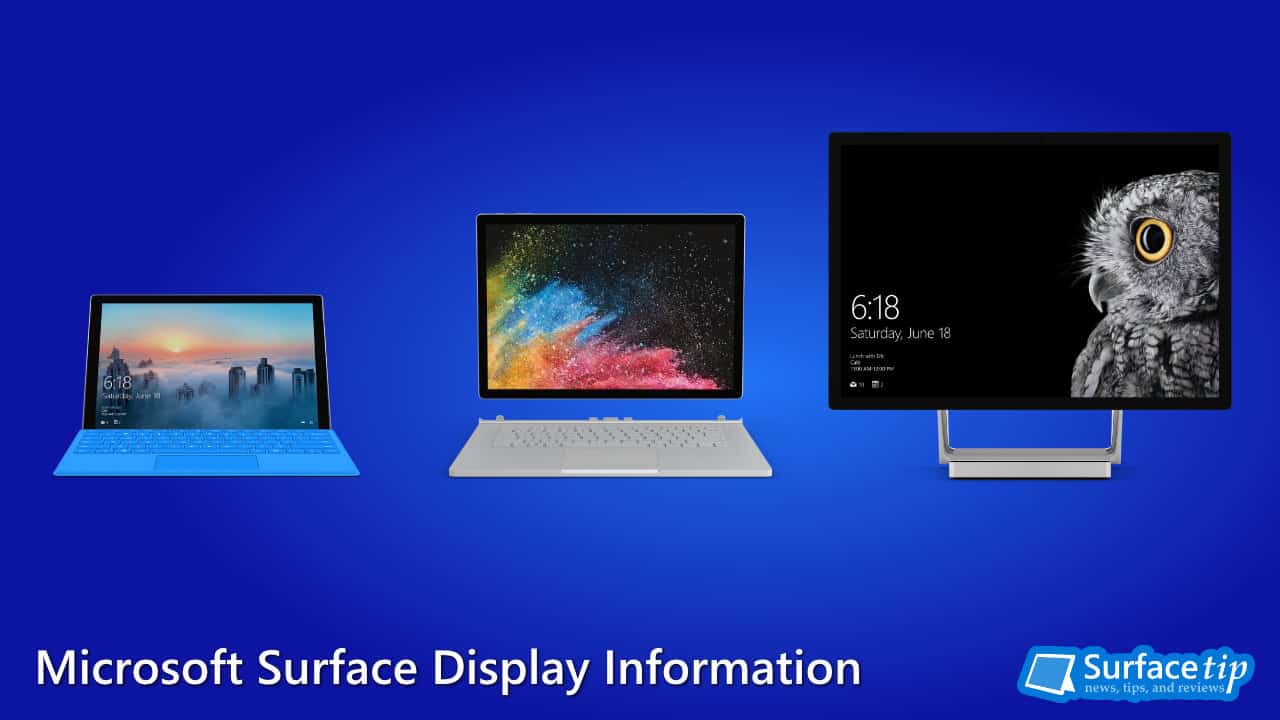
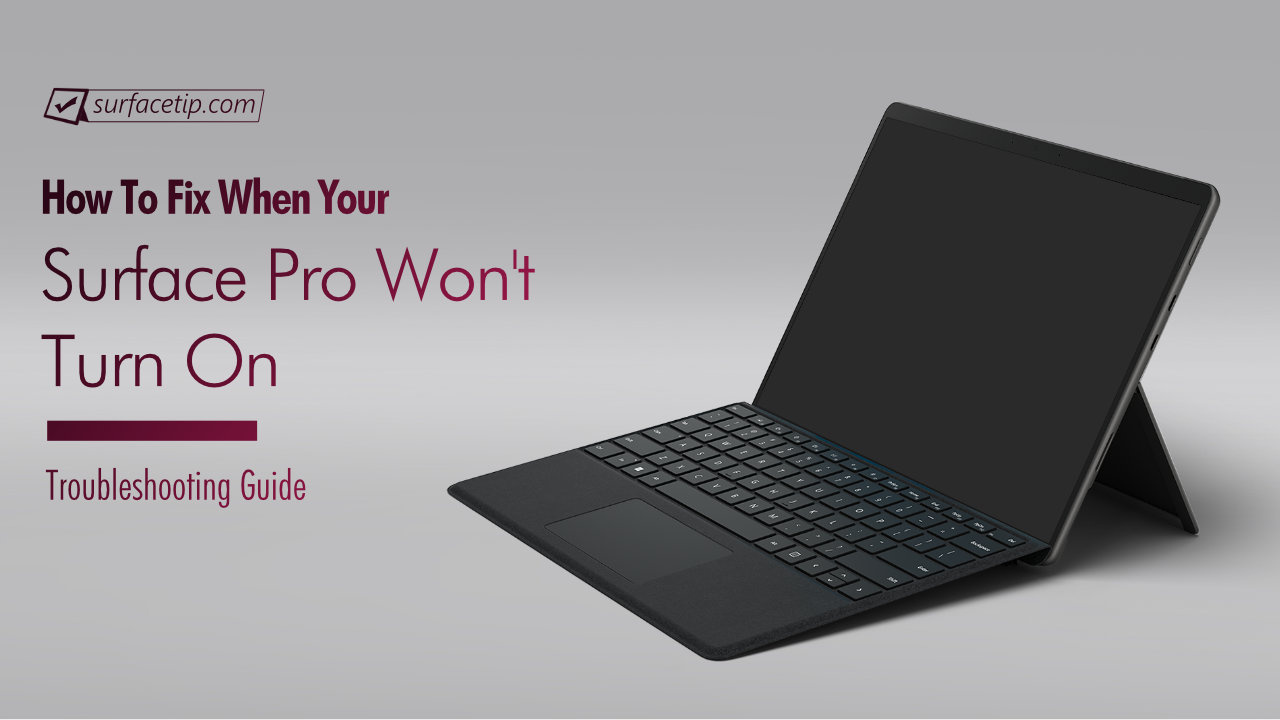
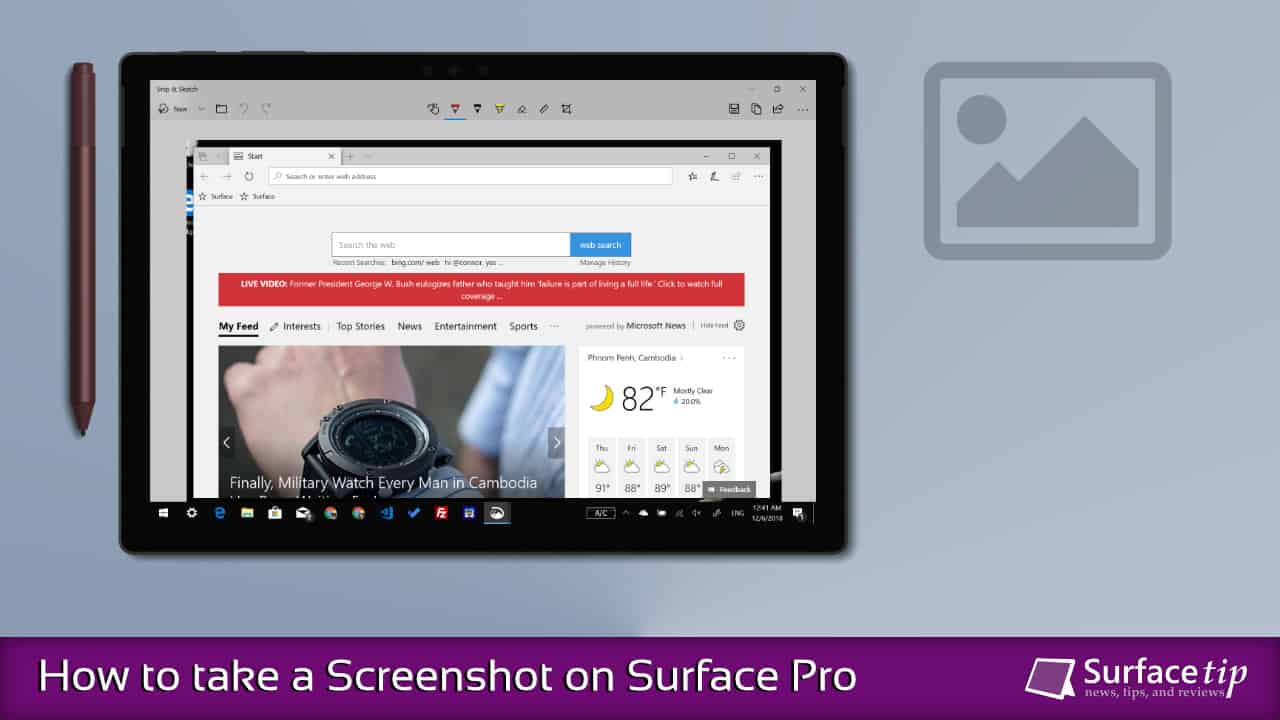
COMMENTS
Let us know what you think!
We appreciate hearing your thoughts, questions, and ideas about “How to Boot Surface Go From a USB Drive”.
I can’t startup from Usb on any of these ways. I have a Surface go 2 with Windows 11 and I use a adapter Usb-C to Usb-A and I want to boot Android X86.
The second way works but it somehow makes my installation go wrong because of the windows boot manager.
And the first way don’t seems to work for a lot of people
A tip for those of us who have already removed Windows from the device…
If the Surface Go refuses to boot from the live USB, even after adjusting boot order in the Windows boot menu, then start your normal Linux distro, leaving the USB attached, install efibootmgr, run it in terminal, and adjust order of boot options (you can find tutorials online). When the USB is attached, you should see the option “Linpus” (a very minimal Linux distro); non-intuitively, this should be boot priority 1, as it will invoke a grub menu instead of the Windows boot menu, after you have powered down, allowing you to select and run the live USB.
P.S. Hit Esc key when starting, in order to enter grub menu.
Brian, you are a genius! THANKS
If you only knew how long it took me to find that solution among all the other non-working tips! 😉
Glad you found it helpful.